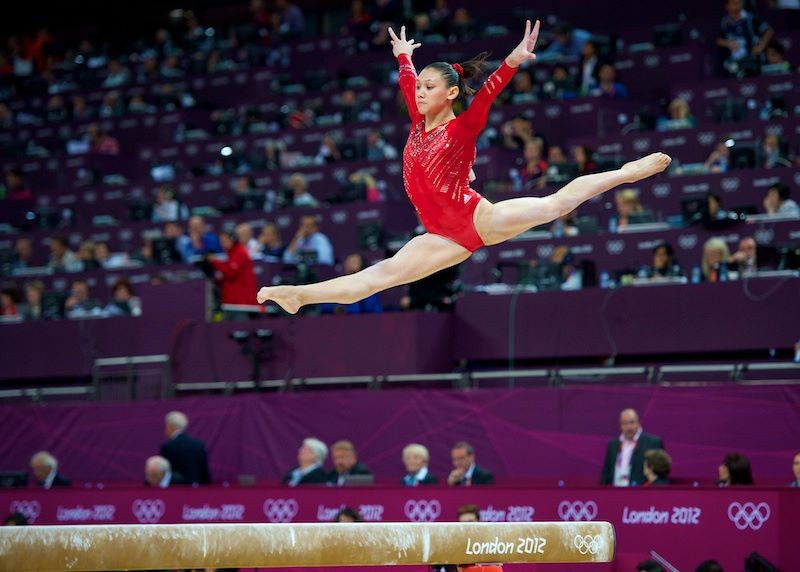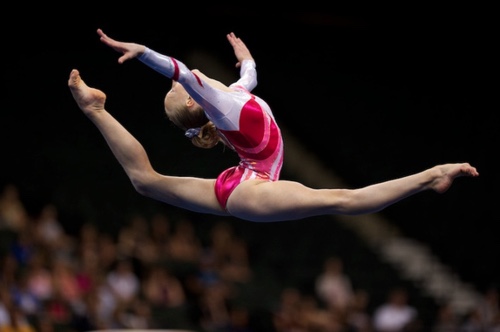 February 29 comes every 4 years. Every Olympic Year. A leap can be many things.
February 29 comes every 4 years. Every Olympic Year. A leap can be many things.
verb (used without object), leaped or leapt, leaping.
1. to spring through the air from one point or position to another; jump:
to leap over a ditch.
2.to move or act quickly or suddenly:
to leap aside; She leaped at the opportunity.
3.to pass, come, rise, etc., as if with a jump:
to leap to a conclusion; an idea that immediately leaped to mind.
Gymnasts, celebrate it by spending a little extra time on your leaps or your leap series. We have a few weeks until States and Regionals. Now is the time for you to shave a few tenths. Saving these tenths you could leap ahead of the competition.
Coaches, Take LEAP DAY, come up with a plan to work leaps. TAKE OFFS and LANDINGS. Can you come up with 3 drills for each?
Last Month I wrote in the US Elite Coaches Association News letter about the need for an Intellectual Great Leap Forward in our sport.
In the short voyage of our lifetime, in and out of the gym, we can see the eddies and ripples on the surface, but not the under-currents changing the main channel of the stream. Only history can see that. We need to look back at the things that caused real and fundamental change in our sport.
In gymnastics things tend to stagnate for a long time before there is some jump forward.
Look at vault. It hadn’t changed at the top level until Natalia Yurchenko competed the first Yurchenko Vault in 1982. Until the introduction of the vault table in the late 90’s (first used at World Championships in 2001) Yurchenkos were really only competed (successfully) by the most dedicated gymnasts.
But still there has been little change.
So many coaches view the yurchenko double full as a great and rare vault especially at the JO level. But did you know it was first competed in 1985? The Vault Table has made Round Off entry vaults more available to the masses but in more than 30 years there has been little change. The Amanar (Yurchenko 2 1/2 twist) was first competed at the 2000 Olympics!
What our sport needs is an intellectual Great Leap Forward.
Where do our great ideas come from?
Thinking about the origins of human intelligence, basically seeking to discover where we came from and where we are headed next. For the past 200,000 years, human brains have been roughly the same size and shape, but for some inexplicable reason, roughly 50,000 years ago, there was an explosion in art, ingenuity, and civilization. Why? No one knows. This conundrum has been given the name the Great Leap Forward and has baffled both anthropologists and philosophers.
Various theories have been proposed, but no true consensus has ever been reached. The most common thought is that the Great Leap Forward coincided with early man’s migration out of Africa, when we were exposed to foreign lands and unique challenges, which stimulated new innovations and ways of looking at life.
But what if it was something more?
What if there was a person or a group of people, possibly a tribe, who were just smarter than the rest through some interesting mutation in their DNA. And what if this tribe was teachers?
They taught the other tribes, they assimilated into them and that stimulated the great changes.
Take that same theory and look at art. Famous artists did not paint and create in solitude. They had apprentices and students. They taught others.
The Renaissance artists gave way to Baroque.
I would like to see the same thing in gymnastics. Our Great Leap Forward. Instead of playing catch up, which too many coaches do, Think big and make that leap.
I wrote these ideas to a friend and colleague. Her response is worth sharing.
Coaches with great ideas need a chance to share them. Great thoughts or ideas often create new thoughts or ideas. Someone’s genetic makeup may allow them to be predisposed to being smarter but people can have great ideas without being a genius. An intellectual leap forward can be created. That’s what teaching or coaching is. Planting new ideas or intellectual thoughts is what creates critical thinking and therefore, creates new ideas. I think the way you educate coaches is what will create a leap forward. The new and great ideas are going to come from the more experienced coaches who have evolved and pass their experiences and great ideas onto others. The other part of this is that coaches have to be willing to fail.
C.G.
Too many are afraid of the risk of failure in the coaching process. But just like with kids, you must fail if you will succeed.
My goal for 2016 is to spend time with people willing to share their knowledge and experience, let me get their thoughts and ideas.
I think I can learn from everyone.
So when are we going to get a coffee and what are you going to teach me?
How are you going to spend LEAP DAY?





